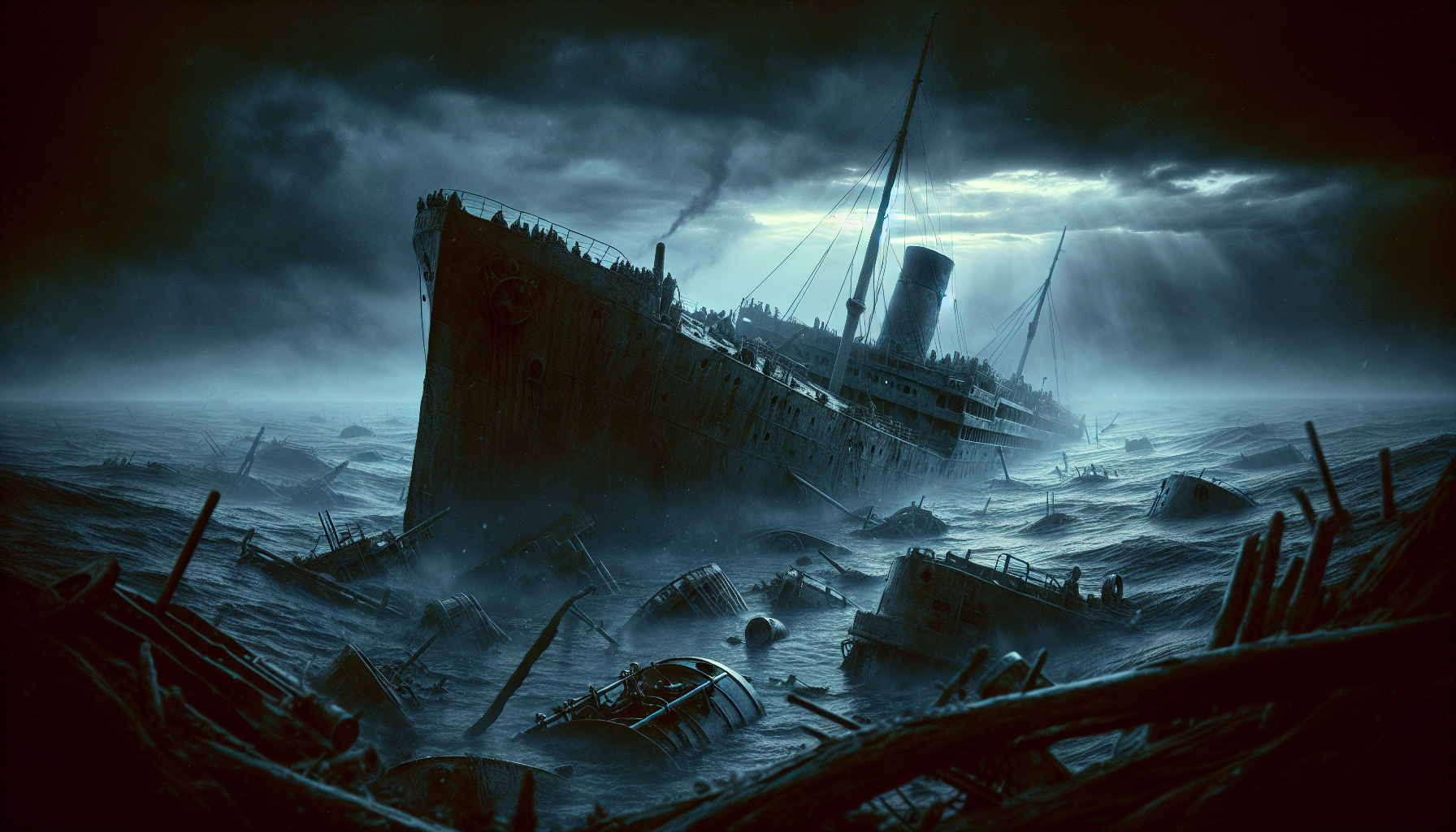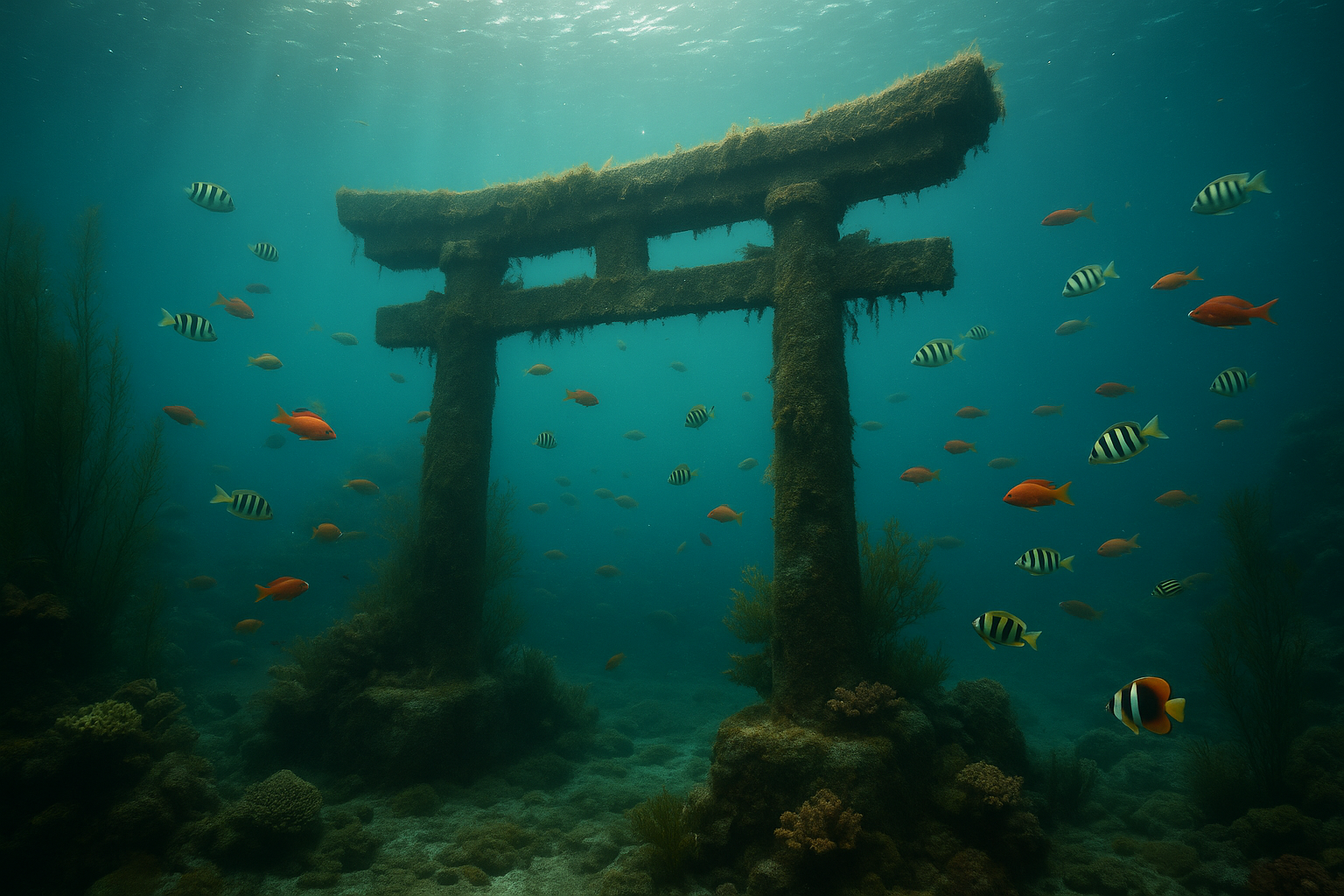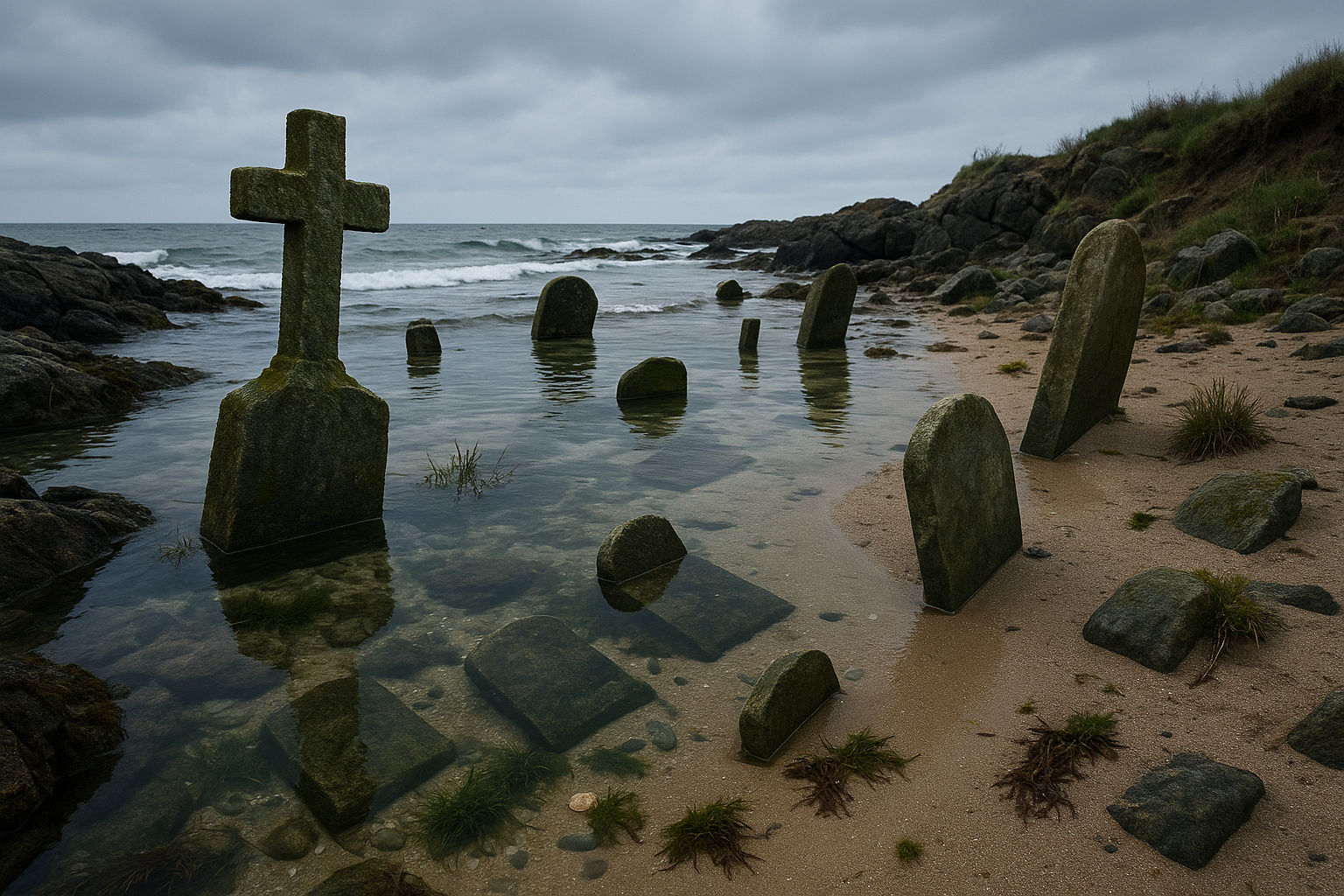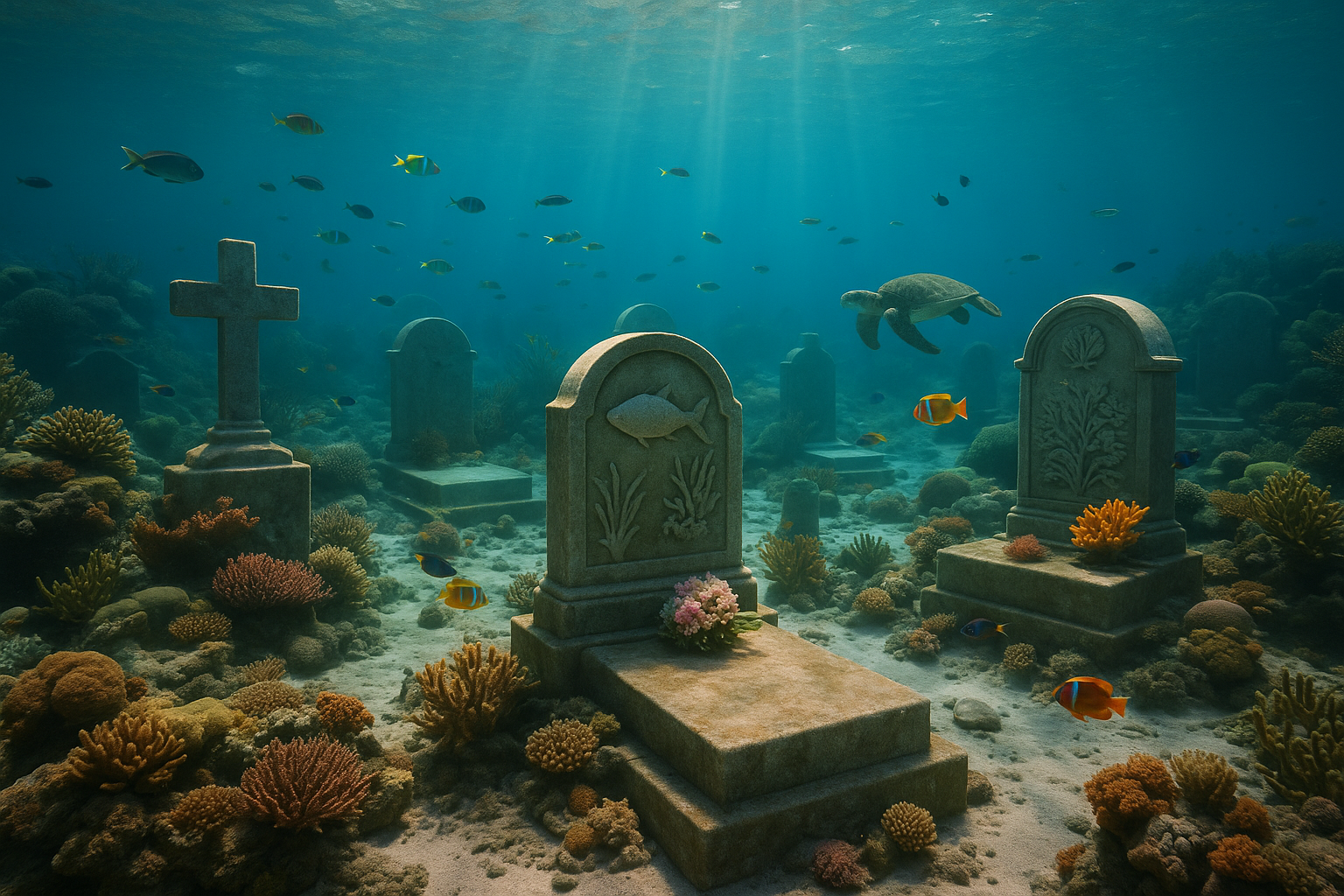Publicidade
In the annals of maritime history, tales of tragedy and heroism often linger in our collective memory, weaving stories that resonate across generations. One such story is that of the MS Estonia, a vessel whose name has become synonymous with one of the deadliest maritime disasters in recent European history. As the ship embarked on what was supposed to be a routine voyage across the Baltic Sea on the fateful night of September 28, 1994, no one on board could have anticipated the unfolding catastrophe that would claim 852 lives. This article embarks on a poignant journey to uncover the details of that night, examining the series of events that led to the ship’s untimely demise and exploring the aftermath that continues to impact maritime safety regulations today. 🌊
The Estonia was more than just a ship; it was a symbol of progress and connection in a post-Cold War Europe, representing a bridge between East and West. With its sleek design and modern amenities, it offered passengers a sense of comfort and security. Yet, beneath this veneer of safety lay vulnerabilities that would be tragically exposed by the unforgiving forces of nature. As we delve into the technical failures that plagued the vessel and the human errors that compounded the disaster, we will also shed light on the personal stories of survival and loss. These narratives, often overshadowed by the broader tragedy, provide a deeply human dimension to the statistics, reminding us of the individual lives affected by the disaster.
Throughout this article, we will explore the broader implications of the Estonia tragedy on maritime policies and safety measures, examining the lessons learned and the changes implemented in its wake. The International Maritime Organization (IMO) and various national authorities took significant steps to prevent such disasters from occurring again, but questions remain about whether enough has been done. As we navigate through the intricate layers of this maritime disaster, from the initial moments of panic to the ongoing debates surrounding the investigation’s findings, we invite you to reflect on the enduring impact of the Estonia’s story. It is a tale of loss and resilience, one that continues to resonate in the hearts of those who remember and those who strive to ensure that history does not repeat itself. 🕊️
The Estonia Ship Disaster: An Overview
The Estonia ship disaster, one of the deadliest maritime accidents in the late 20th century, occurred on the night of September 28, 1994. The tragedy struck in the Baltic Sea, claiming 852 lives out of the 989 people on board. The MS Estonia was a passenger and car ferry built in 1980 and operated by Estline, plying the route between Tallinn, Estonia, and Stockholm, Sweden. This disaster is often remembered for the numerous lives lost and the enduring questions surrounding the incident’s cause and response.
The vessel’s journey on that fateful night began like any other. Departing from Tallinn, the Estonia encountered increasingly rough seas as it sailed further into the Baltic. Reports indicate that the weather conditions were deteriorating, with high winds and waves reaching heights of four to six meters. Such conditions were challenging but not unusual for the region during the autumn months. However, within hours, a series of catastrophic failures would transform this routine voyage into a disaster of monumental proportions.
A crucial aspect of understanding the disaster lies in examining the vessel’s design and structural integrity. The Estonia was equipped with a bow visor—a moveable part of the ship’s hull designed to facilitate the loading and unloading of vehicles. On the night of the incident, it is believed that the bow visor failed, allowing seawater to flood the car deck rapidly. This ingress of water destabilized the vessel, leading to its quick capsizing and eventual sinking. The rapidity of these events left little time for evacuation, contributing to the high casualty rate. The tragedy of the Estonia ship remains a poignant reminder of the vulnerabilities inherent in maritime travel, despite advancements in technology and safety protocols.
Investigating the Causes: What Went Wrong?
The investigation into the Estonia disaster was multifaceted, involving several countries and leading to numerous theories about what might have gone wrong. At the heart of the investigation was the failure of the bow visor. The official report by the Joint Accident Investigation Commission (JAIC), comprising representatives from Estonia, Finland, and Sweden, concluded that the visor had detached due to heavy seas and inadequate locking mechanisms. This failure allowed water to inundate the car deck, destabilizing the ship.
However, this conclusion was not without controversy. Various alternative theories have been proposed over the years, ranging from suggestions of a hidden collision with a submarine to speculations about an explosion on board. These theories, though not substantiated by official investigations, highlight the complexities and the emotional gravity surrounding the disaster. The lack of a conclusive explanation in the eyes of many survivors and victims’ families continues to fuel these debates.
Safety regulations and procedures also came under scrutiny in the wake of the disaster. Questions were raised about the adequacy of life-saving equipment and crew preparedness. The tragedy spurred significant changes in international maritime safety regulations. The International Maritime Organization (IMO) introduced stricter standards for the design and construction of passenger ships, particularly concerning the bow visors and hull integrity. These measures, while a step forward, serve as a sobering reminder of the lessons learned from the Estonia disaster. For those interested in a more visual representation of the accident and subsequent investigations, check out this detailed video analysis on the Estonia disaster.
Rescue Operations: Challenges and Responses
The rescue operations in response to the Estonia disaster were fraught with challenges. As the ship began to capsize in the early hours of September 28, a distress signal was sent out, prompting a multi-national rescue effort. The response involved vessels and helicopters from Finland, Sweden, and Estonia. Despite these efforts, the harsh weather conditions and darkness of night severely hampered rescue attempts.
Survivors described harrowing experiences as they attempted to escape the sinking ship. Many had to jump into the frigid Baltic waters, clinging to life rafts or debris. Hypothermia was a significant risk, given the cold temperatures and prolonged exposure to the sea. The rescue operations managed to save 137 people, but the overwhelming majority of passengers and crew did not survive.
The challenges faced during the rescue operations prompted a reevaluation of emergency response protocols. The importance of rapid response capabilities, effective communication, and coordination between countries became evident. The Estonia disaster underscored the need for improved training for both crew and rescue personnel, as well as advancements in life-saving technologies and equipment. The lessons learned from the tragedy continue to inform maritime safety practices to this day, aiming to prevent a similar disaster from occurring in the future.
Comparative Analysis: Similar Maritime Disasters
The Estonia disaster is often compared to other significant maritime tragedies, such as the Titanic and the Herald of Free Enterprise. While each incident occurred under different circumstances, they share common themes related to human error, design flaws, and inadequate safety measures. By examining these disasters, one can gain insights into the recurring issues that plague maritime safety and the ongoing efforts to address them.
One of the primary comparisons is with the Titanic disaster of 1912, where an “unsinkable” ship met its demise after hitting an iceberg. The Titanic’s lack of sufficient lifeboats and the crew’s unpreparedness for such an emergency contributed to the high death toll. Similarly, the Herald of Free Enterprise disaster in 1987, where a car ferry capsized due to the failure to close bow doors, echoes the issues of design flaws and human oversight seen in the Estonia tragedy.
Understanding these past tragedies highlights the importance of rigorous safety standards and the continuous evaluation of maritime practices. It is crucial for the industry to learn from these events, implementing changes that enhance the safety of passengers and crew. Below is a comparative table that outlines key aspects of these maritime disasters:
| Disaster | Year | Primary Cause | Fatalities |
|---|---|---|---|
| MS Estonia | 1994 | Structural Failure (Bow Visor) | 852 |
| Titanic | 1912 | Iceberg Collision | 1,514 |
| Herald of Free Enterprise | 1987 | Bow Door Failure | 193 |
For a deeper dive into the lessons learned from these disasters, watch this comprehensive video analysis: Lessons from Maritime Disasters – Analysis.
The Human Impact: Stories of Survival and Loss
At the heart of the Estonia disaster are the personal stories of those who lived through it and those who did not. The tragedy left a lasting impact on the survivors and the families of the victims. Each story is a poignant reminder of the human cost of such disasters and the indelible mark they leave on communities and nations.
Survivors of the disaster recount moments of sheer terror and the instinctual fight for survival. Many describe the initial confusion as the ship began to list, followed by the realization of the dire situation as water began to flood the decks. The struggle to reach life rafts and the subsequent ordeal in the freezing waters of the Baltic are common threads in these narratives. For many, the psychological scars of that night remain, as they grapple with survivor’s guilt and the haunting memories of lost friends and family.
The broader impact of the disaster extended beyond individual stories, affecting entire communities. In Estonia, the tragedy resonated deeply, as many of the victims were Estonian nationals. Memorial services and commemorative events are held annually, serving as both a tribute to those who perished and a call to remember the lessons learned. The disaster also prompted greater awareness and advocacy for maritime safety, with survivors and families playing an active role in pushing for changes in safety regulations and practices. Their stories and efforts continue to ensure that the memory of the Estonia disaster serves as a catalyst for positive change in the maritime industry.
- Explore the timeline of events leading up to the disaster.
- Understand the impact of weather conditions on maritime safety.
- Learn about the technological advancements in ship design post-disaster.
- Reflect on the personal stories of loss and survival.

Conclusion
Uncovering the tragic tale of the Estonia ship is not just an exploration of a maritime disaster; it is a journey into understanding human vulnerability, the quest for safety, and the relentless pursuit of truth. Throughout this article, we have delved into the harrowing events of that fateful night in September 1994 when the MS Estonia sank into the Baltic Sea, claiming 852 lives. This catastrophe remains one of the deadliest peacetime maritime disasters in history.
To recapitulate, we began by exploring the timeline of events leading up to the disaster. The Estonia, en route from Tallinn to Stockholm, faced brutal weather conditions that night. A combination of high waves and strong winds tested the ship’s integrity. Tragically, the bow visor, a crucial part of the ferry’s structure, failed under these conditions, allowing water to flood the car deck and destabilize the vessel rapidly. Despite the heroic efforts of the crew and passengers, the sinking was swift and devastating.
In examining the causes of the disaster, we scrutinized the design flaws of the Estonia, particularly the bow visor mechanism, which was not adequately robust for the sea conditions it encountered. This was compounded by a lack of effective emergency procedures and training for both crew and passengers. The official investigation, led by the Joint Accident Investigation Commission, laid bare these shortcomings, though it sparked ongoing debates and conspiracy theories about additional factors that may have contributed to the sinking.
We also highlighted the emotional and psychological toll on the survivors and the families of the victims. The trauma of such an event leaves scars that last a lifetime, impacting mental health and well-being. Survivor stories remind us of the resilience of the human spirit but also underscore the need for comprehensive support systems for those affected by such tragedies.
Furthermore, the disaster prompted significant changes in maritime safety regulations. The International Maritime Organization (IMO) introduced new standards for ferry design and safety, aiming to prevent a similar tragedy from occurring. This reflects a broader theme of learning from past mistakes to build a safer future.
The Estonia disaster also touched upon international relations and cooperation, as multiple countries were involved in the rescue operations and subsequent investigations. It served as a sobering reminder of the importance of collaborative efforts in addressing cross-border challenges.
As we conclude this deep dive into the Estonia ship disaster, it is crucial to reflect on its enduring significance. This tragedy reminds us of the fragility of life and the imperative of vigilance in safety practices. The lessons learned have undoubtedly saved countless lives by improving maritime safety standards globally.
For the reader, the story of the Estonia is more than a historical recount; it is a call to action. We encourage you to think critically about safety in all areas of life, to demand transparency and accountability from organizations and governments, and to support those who advocate for better safety regulations. Discuss these issues with others, share the knowledge you have gained, and apply these lessons to other contexts where safety is paramount. 🌊
Let this story inspire a commitment to continuous improvement and vigilance in our communities and industries. By doing so, we honor the memory of those who lost their lives in the Estonia disaster and contribute to a safer world for future generations.
For further reading and to explore more about maritime safety and historical investigations, you may refer to the following resources:
– International Maritime Organization (IMO) – Safety Regulations
– Estonia Accident Investigation Report
–
Engage with this narrative by leaving a comment, sharing your thoughts, or discussing it with others. Let us remember that by learning from the past, we equip ourselves to build a safer and more resilient future. 🌟
Toni Santos is a visual storyteller and maritime memory-keeper whose work navigates the haunting beauty of marine cemeteries and shipwrecks. With an eye for forgotten vessels and the silent worlds beneath the waves, Toni transforms sunken histories into visual narratives rich with mystery, loss, and the quiet passage of time.
His creative journey is anchored in a deep fascination with what the ocean hides — rusted hulls, broken figureheads, and relics of lives interrupted. Each design, illustration, or curated study Toni creates is a tribute to these submerged time capsules, blending historical detail with poetic reverence for what once sailed proudly above the surface.
With a background in handcrafted design and archival research, Toni combines artistry with investigation, reimagining the resting places of ships not as ruins, but as underwater cathedrals — places where nature and history entwine. His work evokes the solemn grandeur of decaying iron, the ghostliness of forgotten names, and the marine life that now calls these wrecks home.
As the creator behind Vizovex, Toni offers visual chronicles, curated collections, and immersive storytelling that bring shipwrecks and ocean graveyards into focus. His mission is not just to document them — but to mourn, honor, and reawaken the stories they still hold.
His work is a tribute to:
The tragic elegance of sunken ships
The stories sealed in salt and time
The silent legacy of the sea’s forgotten fleet
Whether you’re a maritime historian, a deep-sea dreamer, or someone drawn to the mysteries that rest beneath the tides, Toni invites you into a world where history doesn’t sink — it waits to be seen, one wreck, one relic, one wave-worn story at a time.





